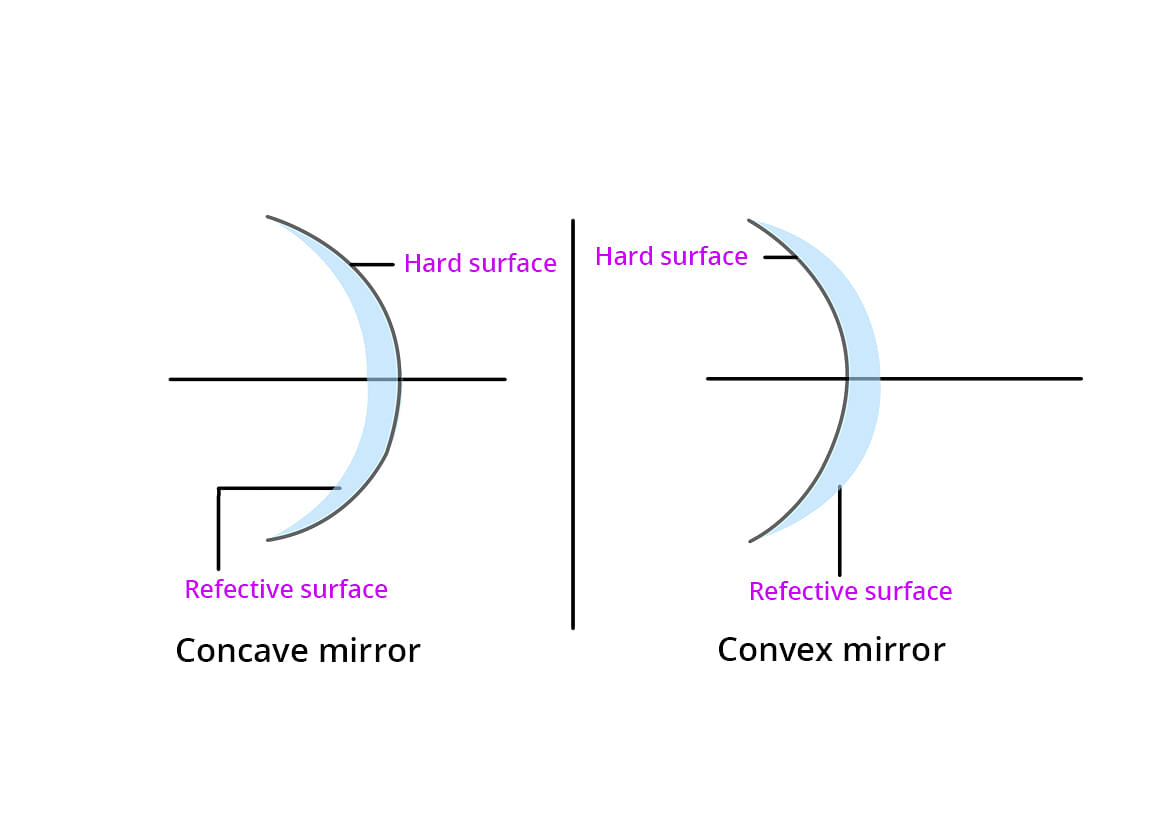Question:
In an experiment to find the focal length of a concave mirror a graph is drawn between the magnitudcs of $u$ and $v$. The graph looks like
In an experiment to find the focal length of a concave mirror a graph is drawn between the magnitudcs of $u$ and $v$. The graph looks like
Updated On: Jul 5, 2022
- straight line along the x-direction
- a circle in the xz-plane
- a circle in the yz-plane
- a circle in the xy-plane
Hide Solution
Verified By Collegedunia
The Correct Option is B
Solution and Explanation
If a particle carrying a positive charge $q$ and moving with
velocity $v$ through a point in magnetic field experiences a
deflecting force $F$, then magnetic field $B$ is given by
$ F=qv \times B $
Here $ v=v_x= \widehat {i}$
and $B=B_y \widehat {j}$
$ B=B_y \widehat {j}$
$\therefore F=ev_xB_y(\widehat {i}\times \widehat {j})=ev_xB_yk $
Hence, subsequent motion of the
charged particle will be a circle in the xz-plane.
Was this answer helpful?
0
0
Top Questions on Spherical Mirrors
- A concave mirror produces an image of an object such that the distance between the object and image is 20 cm. If the magnification of the image is \( -3 \), then the magnitude of the radius of curvature of the mirror is:
- JEE Main - 2025
- Physics
- Spherical Mirrors
- (ii) An object at a distance of 16 cm from a spherical mirror forms a virtual image at a distance of 12 cm behind the mirror. Determine the magnification of the image and type of the mirror.
- UP Board X - 2025
- Science
- Spherical Mirrors
- Image of an object formed by a concave mirror is real and of the size of the object. The object is placed -
- UP Board X - 2025
- Science
- Spherical Mirrors
- With the help of a suitable ray diagram, derive the formula \( \frac{1}{v} + \frac{1}{u} = \frac{1}{f} \) for a concave mirror.
- UP Board XII - 2025
- Physics
- Spherical Mirrors
- The length of the image formed by a concave mirror:
- UP Board XII - 2025
- Physics
- Spherical Mirrors
View More Questions
Questions Asked in AIIMS exam
- Given that the surface charge density on a sphere is 200 μC/m2, what is the electric field at the surface of the sphere?
- AIIMS - 2024
- Electrostatics
- Which of the following is a crystalline solid?
- AIIMS - 2024
- The solid state
- Which of the following is a globular protein?
- AIIMS - 2024
- Biomolecules
- 1028 grams of seawater sample contains 7 mL of dissolved oxygen ($ \text{O}_2 $). What is the concentration of oxygen in parts per million (ppm)?
- AIIMS - 2024
- Environmental Chemistry
- Explain why ortho-nitrophenol is more steam volatile than para-nitrophenol.
- AIIMS - 2024
- Hydrogen Bonding
View More Questions
Concepts Used:
Spherical Mirrors
A spherical mirror is a mirror which has been cut out of a spherical surface.
There are two kinds of spherical mirrors:
- Convex Mirror
- Concave Mirror

Concave Mirror
Concave mirrors are also called converging mirrors, because in these types of mirrors, light rays converge at a point after impact and reflect back from the reflective surface of the mirror.
Convex Mirror
The convex mirror has a reflective surface that is curved outward. Regardless of the distance between the subject and the mirrors, these mirrors are "always" virtual, upright and reduced.